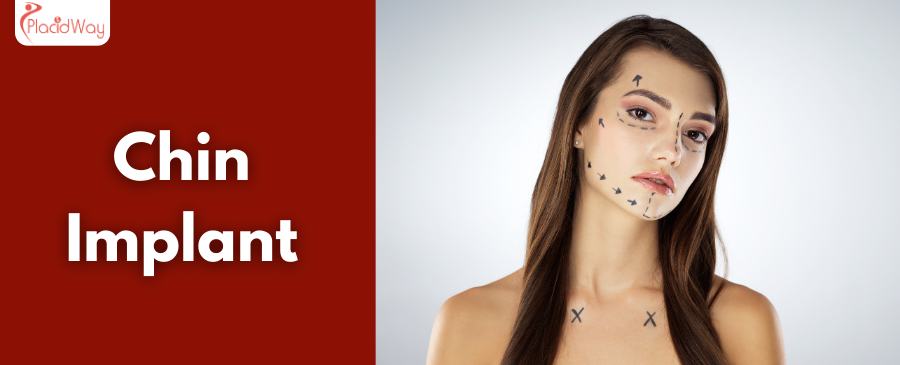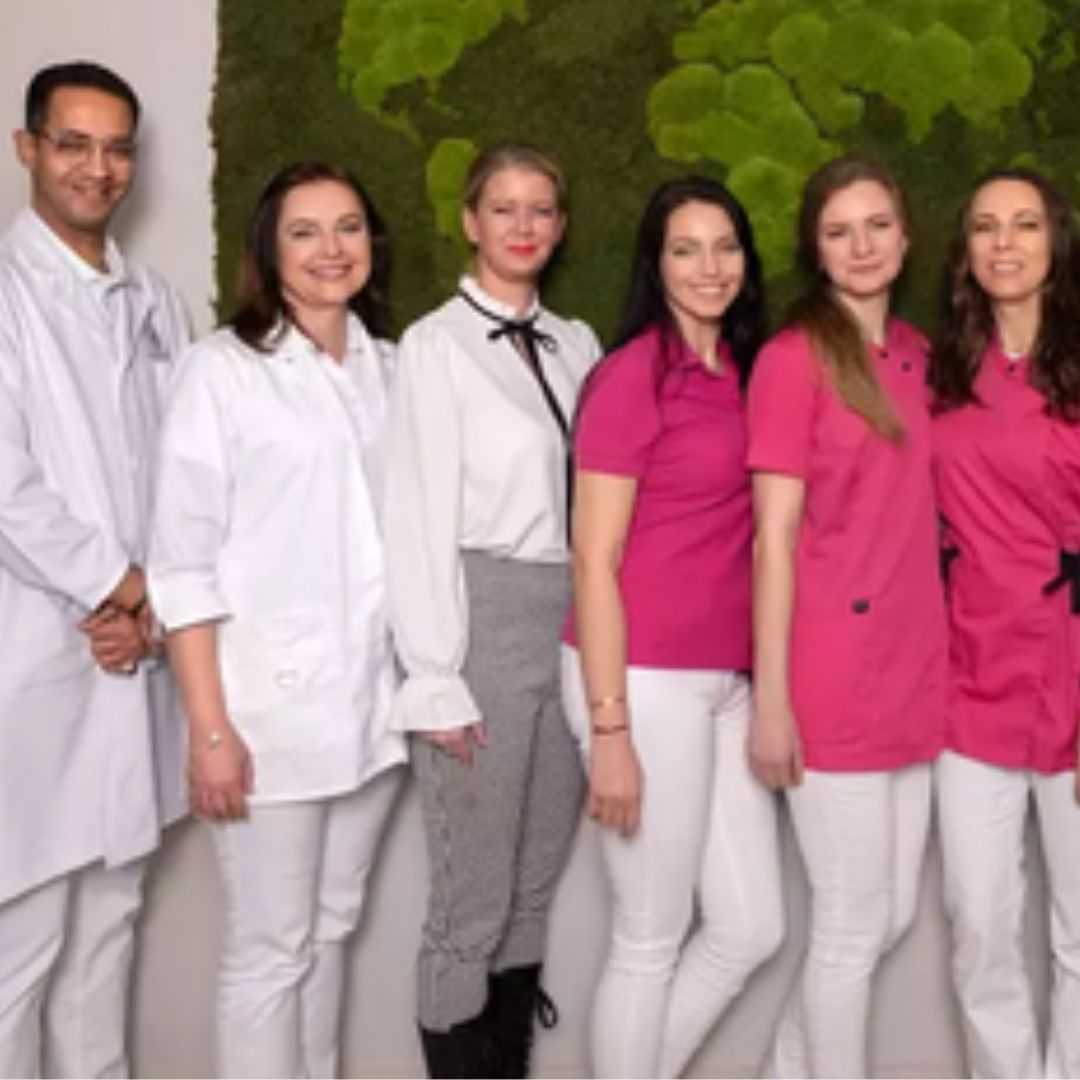
Unlock Your Best Profile: Discover Chin Implant Surgery Abroad
Do you ever look in the mirror and feel like your chin doesn't quite match the rest of your face? Perhaps you have a "weak chin" or a "receding chin" that affects your facial harmony, making your nose appear larger or your neck less defined. This feeling is more common than you might think, and for many, it leads to a desire for greater facial balance and confidence.
A chin implant, also known as chin augmentation, is a cosmetic surgical procedure designed to enhance the projection and definition of your chin. It’s a popular solution for individuals seeking to improve their facial profile, creating a stronger jawline and a more proportionate look. By carefully selecting a high-quality, biocompatible implant and placing it precisely over your existing chin bone, surgeons can achieve a natural-looking enhancement that transforms your entire facial aesthetic.
This procedure is not just about vanity; it's about restoring confidence and achieving a sense of equilibrium in your appearance. Whether your chin recedes due to genetics, or you simply desire a more prominent jawline, a chin implant can offer a lasting solution. For many seeking both quality and affordability, considering chin implant surgery abroad has become an increasingly attractive option, allowing access to world-class surgeons and state-of-the-art facilities at a fraction of the cost.
What Are the Signs of a Weak or Receding Chin?
Identifying a weak or receding chin often comes down to observing your facial profile. While beauty is subjective, certain characteristics can indicate that a chin implant might enhance your facial balance:
- Lack of Projection: Your chin appears to sit too far back, almost blending into your neck, especially when viewed from the side.
- Imbalance with Other Features: Your nose might seem disproportionately large, or your forehead more prominent, due to the lack of chin projection.
- Undefined Jawline: A receding chin can make your jawline appear less distinct, often contributing to the perception of a "double chin" or a less sharp angle between your jaw and neck.
- Short Chin: The vertical height of your chin might also be less than ideal, contributing to an overall softer or less defined lower face.
- Self-Consciousness: You might feel self-conscious about your profile in photos or when looking in the mirror, wishing for a stronger, more defined lower face.
These aesthetic "symptoms" are typically what drive individuals to seek solutions like chin augmentation, aiming to bring their facial features into a more harmonious alignment.
What Causes a Receding Chin and Facial Imbalance?
The main factors contributing to a receding or underdeveloped chin are:
- Genetics: By far the most common cause. The size and projection of your chin are largely determined by your genetic blueprint, passed down through your family. Just like eye color or hair type, bone structure, including that of the jaw and chin, is inherited.
- Bone Structure: Some individuals naturally have a smaller or less prominent mandible (lower jawbone). If the mental tubercle (the bony prominence forming the chin) is not well developed, the chin will appear weak.
- Aging: While less common as a primary cause, aging can sometimes exacerbate the appearance of a receding chin. Loss of bone density, skin elasticity, and soft tissue volume can slightly alter facial contours, sometimes making an already less prominent chin appear even weaker.
- Trauma or Injury: In rare cases, past trauma to the jaw area could impact chin development or lead to structural changes that affect its projection.
Understanding these causes helps patients recognize that a weak chin is a natural anatomical variation, not a flaw, and that surgical solutions can effectively address this structural characteristic.
Types of Chin Augmentation Procedures: Implants vs. Genioplasty
When considering chin augmentation, you generally have two main surgical approaches:
- Chin Implants (Alloplastic Augmentation):
- What it is: This is the most common and often preferred method. A pre-formed, biocompatible synthetic implant (most commonly silicone, but also Gore-Tex or Medpor) is surgically placed over your existing chin bone, enhancing its projection and shape.
- Advantages: Simpler procedure, shorter recovery, predictable results, reversible (implants can be removed), and custom sizing available.
- Materials: Silicone is soft and flexible; Medpor is porous, allowing tissue integration.
- Genioplasty (Osseous Genioplasty):
- What it is: A more involved surgical procedure where the surgeon cuts a section of your own chin bone, moves it forward (or sometimes backward, up, or down), and then secures it in its new position with tiny screws and plates.
- Advantages: Uses your natural bone, can correct more complex issues (like significant asymmetry or vertical deficiencies), and results are permanent as it's your own bone.
- Considerations: More invasive, longer recovery time, potential for temporary numbness, and typically more expensive.
The choice between an implant and a genioplasty depends on your specific needs, the degree of augmentation required, and your surgeon's recommendation. Implants are ideal for simply increasing projection, while genioplasty can address more complex structural concerns.
Is a Chin Implant Right for Me? Eligibility and Ideal Candidates
Determining if a chin implant is the right choice involves a consultation with a qualified surgeon. However, general criteria for ideal candidates include:
- Good General Health: Candidates should be in good physical health and free from medical conditions that could impair healing or increase surgical risks.
- A Receding or Underdeveloped Chin: The primary reason for seeking the procedure is to address a chin that lacks projection or definition.
- Facial Imbalance: Individuals who feel their chin is disproportionate to their nose, forehead, or other facial features.
- Good Dental Occlusion: While chin implants primarily affect the chin's aesthetics, it's important that your bite is relatively normal, as severe malocclusion might require orthodontic or orthognathic surgery instead.
- Realistic Expectations: Understanding what the surgery can achieve and having a clear, but realistic, vision of the desired outcome.
- Non-Smoker: Smoking can significantly hinder healing and increase complication risks.
- Stable Weight: Significant fluctuations in weight can affect facial aesthetics.
A thorough examination and discussion with your surgeon will help confirm your eligibility and ensure the procedure aligns with your aesthetic goals.
What is the Recovery Time for a Chin Implant?
The recovery from a chin implant is generally manageable, but it's important to have realistic expectations:
- Immediately After Surgery: You'll have some swelling, bruising, and discomfort, which can be managed with pain medication. A compression bandage will likely be worn for a few days to minimize swelling and support the implant.
- First Week: Swelling and bruising will be most noticeable. You should rest and avoid strenuous activities. Eating soft foods is recommended. Most people can return to light, non-strenuous work within 5-7 days.
- 2-4 Weeks: Much of the visible swelling will subside, though some residual swelling may persist. You can gradually resume more normal activities, but avoid contact sports or anything that could impact your chin.
- Months 1-3: Residual swelling continues to diminish, and the final contours of your chin will become more apparent. The numbness you might experience around the chin will slowly resolve.
- Full Results: It can take up to 6 months to a year for all swelling to completely disappear and for the final, settled results of your chin augmentation to be visible.
Following your surgeon's post-operative instructions meticulously is crucial for a smooth recovery and optimal results.
Understanding Chin Implant Risks and Potential Side Effects
Like any surgical procedure, chin augmentation comes with potential risks and side effects, though serious complications are rare when performed by an experienced, board-certified surgeon:
- Infection: Though implants are sterile, infection can occur, sometimes requiring implant removal.
- Hematoma/Seroma: Accumulation of blood (hematoma) or fluid (seroma) under the skin, which may require drainage.
- Implant Displacement: The implant can shift from its intended position, leading to asymmetry and potentially requiring corrective surgery.
- Numbness or Nerve Damage: Temporary or, in rare cases, permanent numbness in the chin or lower lip area if nerves are affected.
- Asymmetry: Despite best efforts, some degree of asymmetry can occur.
- Adverse Reaction to Anesthesia: Risks associated with general or local anesthesia.
- Capsular Contracture: Rarely, scar tissue can form around the implant, causing hardening or distortion.
- Erosion of Bone: In very rare cases, the implant can cause pressure on the bone, leading to slight bone reabsorption over time.
- Dissatisfaction with Results: The aesthetic outcome may not meet patient expectations, highlighting the importance of clear communication with your surgeon.
A thorough discussion with your surgeon about these risks and how they are mitigated is an essential part of the consultation process.
Chin Implant Cost Comparison: Worldwide Prices
The cost of a chin implant can vary widely depending on the surgeon's fees, anesthesia costs, facility fees, implant type, and geographical location. Here's a general cost comparison:
| Country/Region | Estimated Cost Range (USD) | Notes |
|---|---|---|
| United States | $4,000 - $8,000+ | Higher cost of living, extensive insurance coverage generally not applicable for cosmetic surgery. |
| Canada | $3,500 - $7,000 | Similar cost factors to the US, but sometimes slightly lower. |
| United Kingdom | £3,000 - £6,000 ($3,800 - $7,600) | Costs vary by clinic and surgeon reputation. |
| Turkey | $1,800 - $3,500 | Highly popular medical tourism destination with competitive pricing and quality. |
| Mexico | $1,500 - $3,000 | Excellent option for North American patients due to proximity and lower costs. |
| Thailand | $2,000 - $4,000 | Renowned for cosmetic surgery with experienced surgeons and modern facilities. |
| South Korea | $2,500 - $5,000 | Known for advanced cosmetic surgery techniques, especially in facial contouring. |
These figures are estimates and can vary. It's crucial to get a personalized quote that includes all associated costs.
Why Consider Chin Implant Surgery Abroad for Better Value?
Many individuals are turning to medical tourism for cosmetic procedures like chin implants, and for good reason:
- Significant Cost Savings: As seen in the table above, the cost of a chin implant can be 50-70% lower in popular medical tourism destinations compared to Western countries. This makes advanced cosmetic procedures accessible to a wider range of patients.
- Access to Expert Surgeons: Countries known for medical tourism often boast highly skilled, internationally trained surgeons who specialize in facial aesthetics and perform these procedures frequently.
- State-of-the-Art Facilities: Many clinics abroad are equipped with the latest technology and adhere to international standards of care, offering modern and comfortable environments.
- Reduced Waiting Times: In some regions, waiting lists for elective procedures can be long. Traveling abroad often allows for quicker scheduling.
- Privacy and Anonymity: Some patients prefer the discretion of having a cosmetic procedure away from their home country.
- Combine with a Vacation: The opportunity to recover in a beautiful, relaxing environment, turning a medical trip into a "medi-vacation."
Which Countries Offer the Best Value for Chin Implants?
When seeking the best value for chin implant surgery, several countries consistently stand out:
- Turkey: Particularly Istanbul and Antalya, are renowned for cosmetic surgery, offering highly experienced surgeons, JCI-accredited hospitals, and comprehensive packages that often include accommodation and transfers, all at very competitive prices.
- Mexico: Border cities like Tijuana and coastal destinations such as Cancun are popular choices for North American patients due to proximity, ease of travel, and significant cost savings, with many surgeons trained in the US.
- Thailand: Bangkok and Phuket are hubs for medical tourism, known for their world-class hospitals, luxurious recovery facilities, and highly skilled cosmetic surgeons, attracting patients globally for various procedures, including chin implants.
- South Korea: Often considered the capital of cosmetic surgery, South Korea offers incredibly advanced techniques, particularly in facial contouring. While potentially slightly pricier than Turkey or Mexico, the expertise and innovative approaches are a major draw.
When selecting a destination, research not only the cost but also the surgeon's credentials, clinic accreditation, and patient reviews.
What to Expect When Traveling for a Chin Implant Procedure?
Embarking on a medical journey for a chin implant involves several key steps:
- Initial Consultation (Remote): Most clinics abroad offer virtual consultations where you can discuss your goals, send photos, and receive initial assessments and quotes.
- Planning and Booking: Once you choose a clinic and surgeon, you'll coordinate surgery dates, book flights, and arrange accommodation. Many medical tourism agencies (like PlacidWay) can assist with these logistics. Plan for a stay of at least 7-10 days to allow for pre-op, surgery, and initial recovery.
- Arrival and Pre-Operative Appointments: Upon arrival, you'll have an in-person consultation with your surgeon, undergo medical tests, and finalize your treatment plan.
- The Procedure: The surgery itself usually takes 1-2 hours under local anesthesia with sedation or general anesthesia.
- Post-Operative Care and Recovery: You'll typically stay one night in the hospital (if general anesthesia) or be discharged the same day. Follow-up appointments will ensure proper healing and implant positioning. Your surgeon will provide detailed instructions for pain management, wound care, and activity restrictions.
- Return Home: Once your surgeon clears you for travel, you can return home to continue your full recovery.
It’s important to have a clear communication plan with your medical team both before, during, and after your trip.
How to Ensure Safety and Quality for Chin Implants Abroad?
While medical tourism offers many benefits, ensuring safety and quality is paramount:
- Accreditation: Look for clinics and hospitals accredited by international bodies like the Joint Commission International (JCI). This indicates adherence to high standards of patient care and safety.
- Surgeon Credentials: Verify your surgeon's qualifications, experience, and board certifications. Ask about their specialization in facial cosmetic surgery and how many chin implant procedures they perform annually.
- Reviews and Testimonials: Research patient reviews and testimonials on independent platforms. Look for before-and-after photos that showcase the surgeon's work.
- Facility Standards: Ensure the clinic has modern equipment, adheres to strict hygiene protocols, and has emergency capabilities.
- Communication: Choose a clinic where you can communicate effectively with the medical staff, ideally in your native language or with excellent translation services.
- Comprehensive Package: Ensure your quote includes all necessary costs: surgeon's fees, anesthesia, facility fees, implant cost, and post-operative care.
- Aftercare Plan: Understand the post-operative care instructions, including how to manage any complications once you return home.
Working with a reputable medical tourism facilitator can also significantly streamline this vetting process.
Real Patient Success Stories: Chin Implants Abroad
Countless individuals have achieved their desired facial harmony and boosted their self-confidence through chin implant surgery abroad. Here are generalized examples of common success stories:
- "From Receding to Refined": Sarah, a 35-year-old from the UK, always felt her chin disappeared into her neck, making her self-conscious about her profile. After extensive research, she chose a clinic in Istanbul. She received a silicone chin implant and, a few months later, marvels at her new, defined jawline and balanced features. "It's subtle but completely transformative," she says. "I feel so much more confident in photos and meeting new people."
- "Affordable Quality": David, a 42-year-old from Canada, wanted to enhance his chin but found the prices at home prohibitive. He traveled to Mexico, where he found a highly reputable surgeon. "The clinic was top-notch, and the surgeon was fantastic. I got the natural-looking result I wanted for less than half the price I would have paid in Vancouver," David shares. "It was a seamless experience."
- "The Confidence Boost": Elena, 28, from the US, always felt her chin was too small, affecting her overall facial symmetry. She opted for a chin implant in Thailand, combining her procedure with a relaxing recovery period. "It wasn't just about the physical change; it was about the huge boost in my self-esteem," Elena explains. "I love my profile now, and I'm so glad I made the decision to go abroad for it."
These stories underscore the value and positive outcomes that patients often experience when choosing medical tourism for their chin augmentation, demonstrating that high-quality, life-enhancing procedures are accessible and affordable beyond local borders.
Take the Next Step with PlacidWay
Ready to explore treatment options abroad? Discover top clinics, compare prices, and get a free quote tailored to your needs with PlacidWay.
Cosmetic Surgery Abroad, Plastic Surgery Abroad










Share this listing